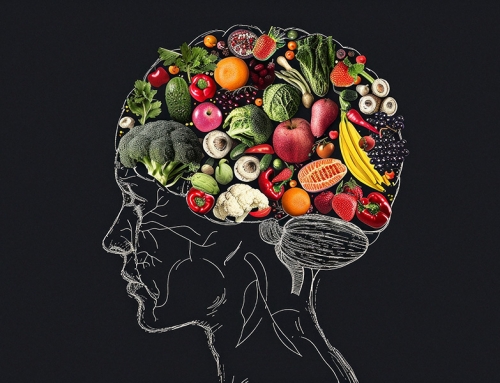In the ever-evolving landscape of healthcare, nutrition plays a crucial role in maintaining overall well-being. However, despite the abundance of information available, many individuals struggle to adopt healthier eating habits. This is where the concept of “nudging” comes into play, leveraging behavioral insights to guide people towards better choices without restricting their freedom of choice. The intersection of nutrition informatics and behavioral nudges, highlighting the potential for improving health outcomes(1).
A nudge defined as “any aspect of the architecture of choice that changes people’s behavior in a way predictable without prohibiting all options or significantly changing their incentives” (1). The term digital nudges refer to nudges that are provided through digital technology and employ user-interface design elements to influence people’s decisions and behaviors (2), again without restricting choice.
Using AI through mobile apps can give personalized feedback right away. Phone’s GPS and geo-fencing can even remind individuals to make better choices, like biking instead of driving, or taking the stairs instead of the elevator, at the right times.(1).
Understanding Nudging in Healthcare
Nudging refers to subtle interventions designed to influence behavior without imposing mandates or limitations. It draws from behavioral economics, psychology, and decision-making theories to encourage positive changes. In the realm of nutrition, nudges can be applied through various channels, including digital health platforms, social media, and point-of-care interactions(3).
Emphasize on Nudging by presenting information in a clear, accessible manner and framing choices positively, nudges can steer individuals towards nutritious options. For instance, displaying calorie counts or nutritional benefits prominently on food packaging can influence purchasing decisions, leading to a more balanced diet(1).
The Role of Digital Health and Informatics
Digital health technologies, such as mobile apps and wearable devices, have revolutionized healthcare delivery. They offer unprecedented opportunities for personalized interventions and real-time monitoring. Integrating nudges into these platforms can enhance engagement and adherence to dietary recommendations, which will promote healthier lifestyles (1,2).
Nudging strategies in digital health can be tailored based on user preferences and behavior patterns. For instance, personalized alerts reminding users to consume adequate fruits and vegetables can reinforce healthy eating habits over time. Additionally, incorporating gamification elements, such as rewards or challenges, can make nutritional guidance more engaging and motivating(4).
Crowdsourced Data and Persuasive Technologies
Crowdsourcing data plays a pivotal role in understanding consumer behaviors and preferences. By analyzing large datasets, healthcare providers can identify trends and tailor nudging interventions accordingly. Persuasive technologies leverage these insights to design persuasive messages and interactive experiences that resonate with users(1).
For instance, an app utilizing crowdsourced data may suggest recipe modifications based on individual dietary restrictions or preferences. By offering personalized recommendations aligned with user tastes, the likelihood of sustained dietary improvements increases. Moreover, interactive features like meal planning tools or virtual coaching can further empower individuals to make informed choices(5).
Ethical Considerations and Future Directions
While nudging holds promise in promoting healthier behaviors, ethical considerations must guide its implementation. Transparency, respect for autonomy, and data privacy are paramount to ensuring positive outcomes and user trust. Continuous research and collaboration across disciplines are also crucial to refining nudging strategies and measuring long-term impact.
Conclusion
Behavioral insights combined with nutrition informatics offer a powerful approach to fostering healthier lifestyles. By leveraging nudges through digital health platforms, crowdsourced data, and persuasive technologies, we can empower individuals to make informed choices and achieve better health outcomes.
References:
- Purohit, Aditya & Schöbel, Sofia & Bill, Olivier & Holzer, Adrian. (2023). Nudging to Change, the Role of Digital Health. 10.1007/978-3-031-17666-1_10.
- M. Weinmann et al.: Digital Nudging, Bus Inf Syst Eng 58(6):433–436 (2016)
- Lakerveld, J., Mackenbach, J. D., de Boer, F., Brandhorst, B., Broerse, J. E. W., de Bruijn, G. J., Feunekes, G., Gillebaart, M., Harbers, M., Hoenink, J., Klein, M., Mensink, F., Middel, C., de Ridder, D. T. D., Rutters, F., Sluijs, I., van der Schouw, Y. T., Schuitmaker, T. J., Te Velde, S. J., Velema, E., … Beulens, J. W. J. (2018). Improving cardiometabolic health through nudging dietary behaviours and physical activity in low SES adults: design of the Supreme Nudge project. BMC public health, 18(1), 899. //doi.org/10.1186/s12889-018-5839-1
- Piniewski, B., Cristiano Codagnone, & Osimo, D. (2011b). Nudging lifestyles for better health outcomes: crowdsourced data and persuasive technologies for behavioural change. //doi.org/10.2791/562
- Joachim, S., Forkan, A. R. M., Jayaraman, P. P., Morshed, A., & Wickramasinghe, N. (2022). A Nudge-Inspired AI-Driven Health Platform for Self-Management of Diabetes. Sensors (Basel, Switzerland), 22(12), 4620. //doi.org/10.3390/s22124620






Leave A Comment